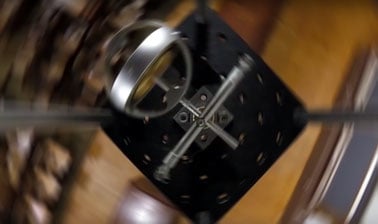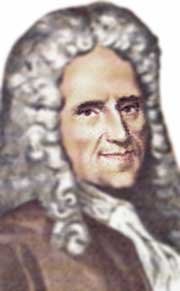The online fluid pressure and Pascal’s principle simulations on this page allow you to study in a practical way this important quality of fluids. We will also discover the importance of Pascal’s principle and its many applications.
What is fluid pressure
Fluid pressure is a fundamental physical property that refers to the force exerted by a fluid on a surface due to the collisions of fluid particles. This pressure can be measured and calculated using principles of physics.
Calculation of fluid pressure
Pressure is defined as the force applied over a unit area. It is expressed in units of pressure, such as pascals (Pa), atmospheres (atm), bars (bar) or millimeters of mercury (mmHg). Pressure can be represented mathematically by the equation:
P = F/A
Where
P is the pressure
F is the force
A is the area over which the force is applied.
Pressure in a fluid depends on several factors, such as the density of the fluid, gravity and the depth at which the fluid is located.
Hydrostatic pressure
Among the different types of pressure in fluids, hydrostatic pressure stands out as a particular case related to fluids at rest. Unlike other forms of pressure that involve motion or changes of state, hydrostatic pressure arises exclusively due to the weight of the fluid and its interaction with gravity. This concept is widely used in science and engineering to study systems where the fluid remains in equilibrium and provides key information about the internal forces acting on these media
The equation for hydrostatic pressure is:
P = ρgh
Where
ρ is the density of the fluid
g is the acceleration due to gravity
h is the height of the fluid
Other types of fluid pressure
In addition to hydrostatic pressure, there are other types of pressures related to fluids, such as vapor pressure, atmospheric pressure and dynamic pressure. Vapor pressure refers to the pressure exerted by gaseous particles that have evaporated from a liquid. Atmospheric pressure is the pressure exerted by the earth’s atmosphere due to the weight of the column of air above a surface. Dynamic pressure is related to the motion of fluids and is used, for example, in the study of aerodynamics.
Applications of fluid pressure
The study of fluid pressure has applications in various areas. In engineering and construction, fluid pressure is considered in the design of hydraulic structures, piping systems and tanks. In medicine, blood pressure is used as an indicator of cardiovascular health. In addition, the study of fluid pressure is fundamental in meteorology for understanding weather phenomena and in industry for the design of fluid systems, such as cooling systems and rocket propulsion systems.
Pascal’s principle
Pascal’s principle postulates that any pressure change applied to a fluid in a closed system is transmitted uniformly in all directions and to all parts of the fluid. Mathematically, this principle is expressed as:
P₁ = P₂
Where P₁ and P₂ are the pressures at two different points within the system, expressed as the ratio of the applied force (F) over the area on which it acts (A):
P = F / A
Importance of Pascal’s principle
Pascal’s principle not only explains fundamental physical phenomena, but has also been key to the technological innovation that underpins modern life. The importance of Pascal’s principle lies in its ability to amplify forces, which has enabled the development of essential technologies in a variety of areas.
Applications of Pascal’s principle
One of its most common applications is in hydraulic systems, such as automobile brakes, hydraulic presses and cranes, where small applied forces generate large useful powers. Pascal’s principle plays a crucial role in civil engineering in the design of heavy machinery and hydraulic structures. In medicine, it is used in equipment such as blood pressure monitors, which measure blood pressure, and in dialysis devices that regulate pressures to process body fluids. Furthermore, in the aerospace industry, this concept is applied in propulsion and control systems where it is essential to ensure uniform pressure distribution in closed systems.
Explore the exciting STEM world with our free, online simulations and accompanying companion courses! With them you'll be able to experience and learn hands-on. Take this opportunity to immerse yourself in virtual experiences while advancing your education - awaken your scientific curiosity and discover all that the STEM world has to offer!
Fluid pressure and Pascal's principle simulations
- Pressure
- Seafloor
- U-tube
- Pascal I
- Pascal II
Fluid pressure and flow
Explore pressure in the atmosphere and underwater. Change the shape of a pipe to see how fluid flow velocity changes. Experiment with a squirting water tower to see how height and water level determine the path of water.
File
This Java simulation cannot run on this device because it has a screen that is too narrow. We recommend that, for a better user experience, you run it on a device with a wider screen.
Although this Java simulation can be run on your device, we recommend that for the better user experience, you run it on a device with a wider screen.
Applications of Pascal’s principle
This Pascal’s principle simulation allows us to examine a practical application of Pascal’s principle. Notice how by changing the areas on either side, it is possible to generate a large force by applying little force.
Giants of science
“If I have seen further, it is by standing on the shoulders of giants”
Isaac Newton

Archimedes
–

Robert Boyle
–
Become a giant


Mechanics, Part 2



Mechanics, Part 1



Dynamics and Control



AP® Physics 1



AP® Physics 1 – Part 4: Exam Prep



The Basics of Transport Phenomena



AP® Physics 2: Challenging Concepts






























